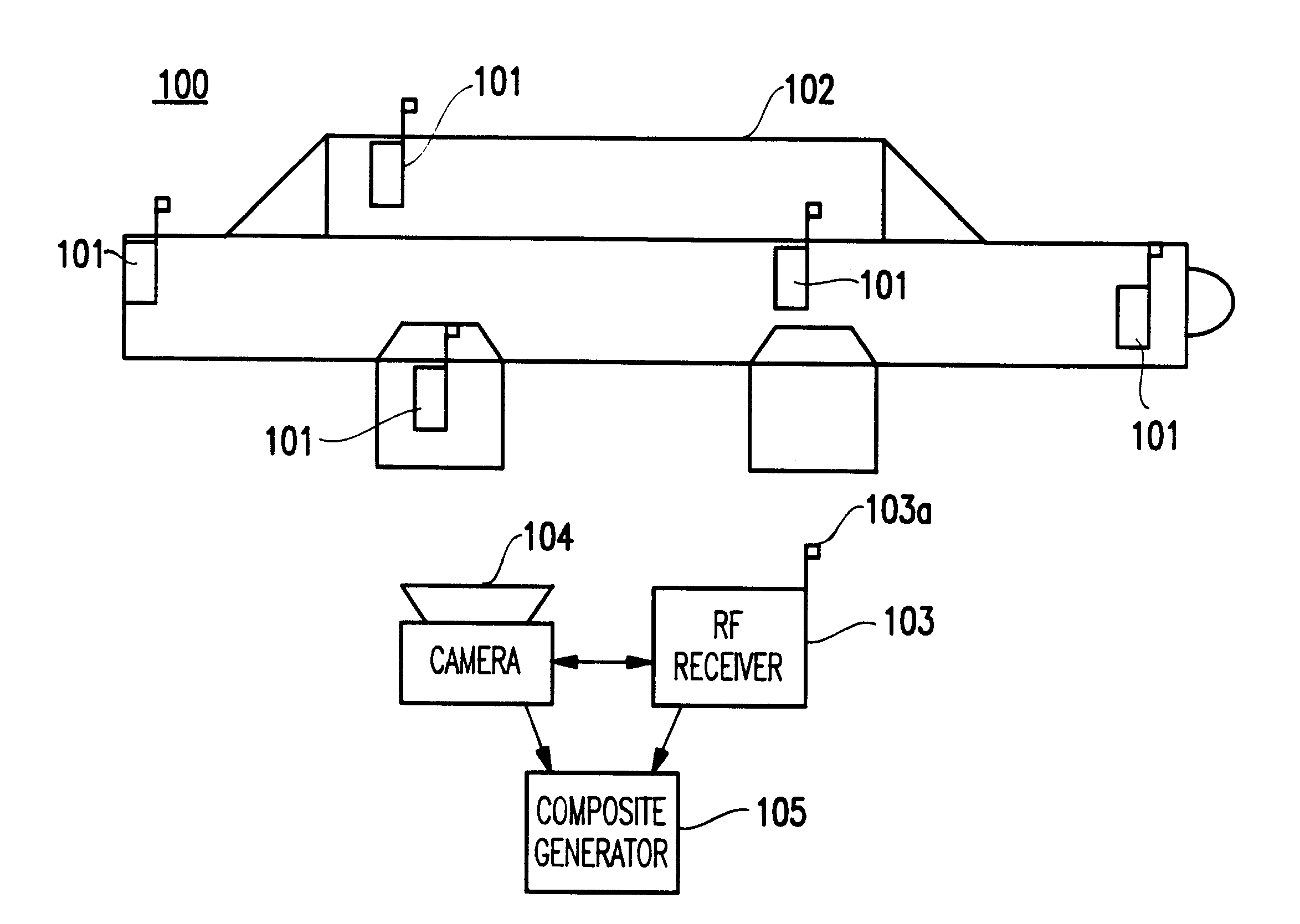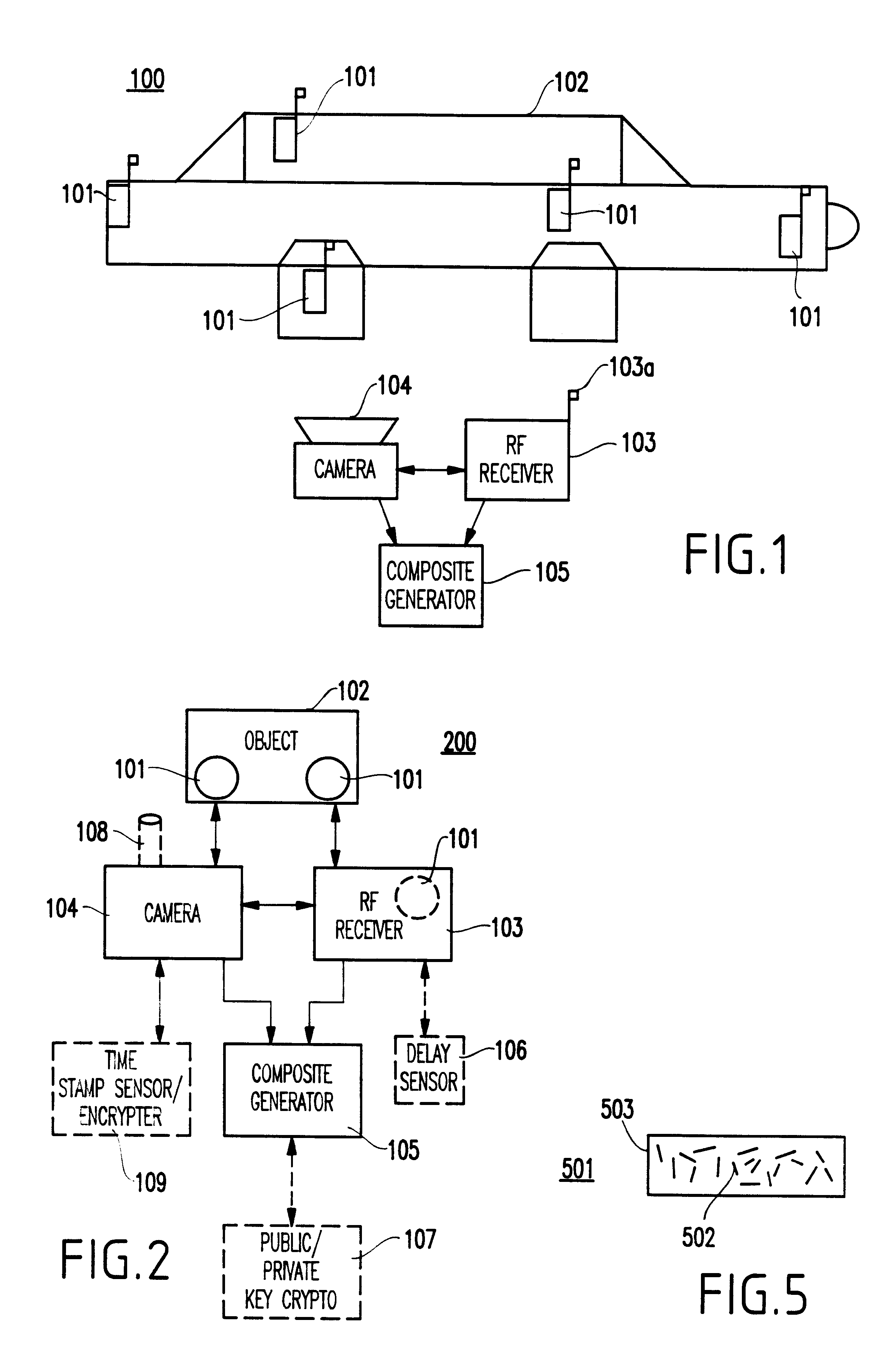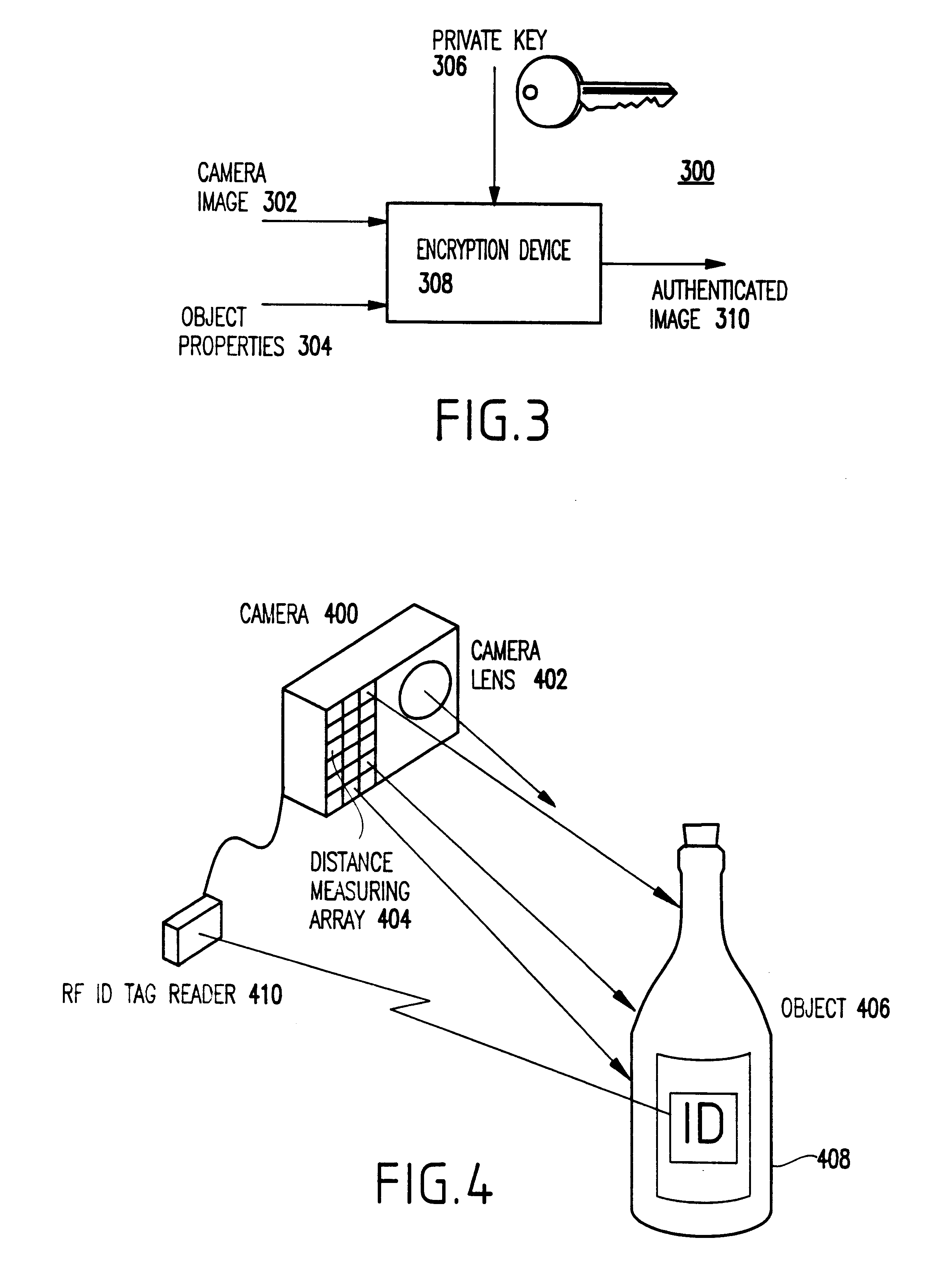Method and system for authenticating objects and object data
a technology applied in the field of methods and systems for authenticating objects and object data, can solve problems such as insurance agencies' falsification of damage and repairs, motor vehicles, and fraud on insurance companies at the hands of unscrupulous repair shops and/or vehicle owners
- Summary
- Abstract
- Description
- Claims
- Application Information
AI Technical Summary
Benefits of technology
Problems solved by technology
Method used
Image
Examples
Embodiment Construction
Referring now to the drawings, and more particularly to FIG. 1, a system 100 according to a first preferred embodiment of the present invention is shown.
As shown, the system 100 includes at least one tag 101 associated with (e.g., attached to, held by, mounted on, etc.) an object 102. Preferably, a plurality of tags 101 are provided associated with the object 102 for even greater reliability. Preferably, the tags are radio frequency identification (RFID) tags exposed to the ambient and visible by the imaging system, such that an image from the tag can be obtained. The tags are encoded with information, which serves to identify with particularity the vehicle to which they are attached. As mentioned above, any attempt to alter the tags, remove the tags and / or attach them to another vehicle destroys the tag or renders them unusable (e.g., nullifies the same).
Thus, the tags may be associated with, attached to, held by, or embedded in the object. The tags may be custom built or may be th...
PUM
 Login to View More
Login to View More Abstract
Description
Claims
Application Information
 Login to View More
Login to View More - R&D
- Intellectual Property
- Life Sciences
- Materials
- Tech Scout
- Unparalleled Data Quality
- Higher Quality Content
- 60% Fewer Hallucinations
Browse by: Latest US Patents, China's latest patents, Technical Efficacy Thesaurus, Application Domain, Technology Topic, Popular Technical Reports.
© 2025 PatSnap. All rights reserved.Legal|Privacy policy|Modern Slavery Act Transparency Statement|Sitemap|About US| Contact US: help@patsnap.com



